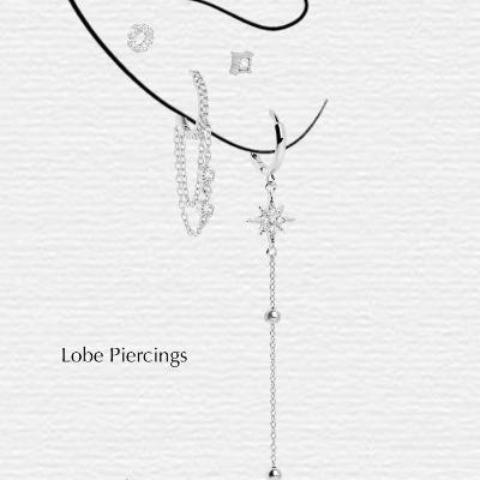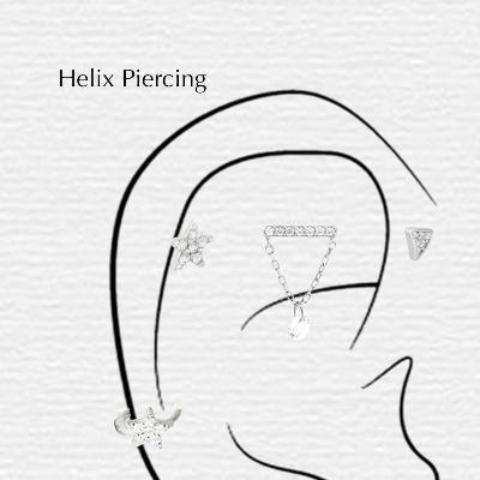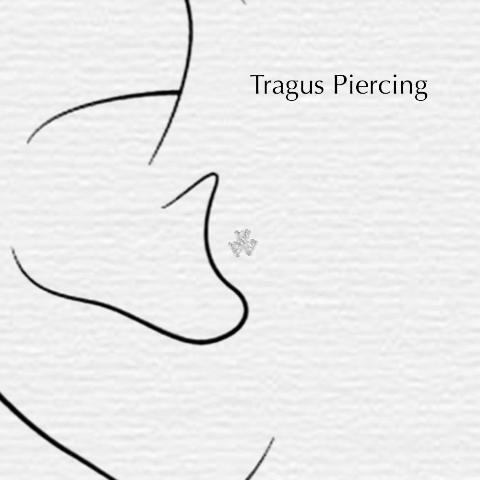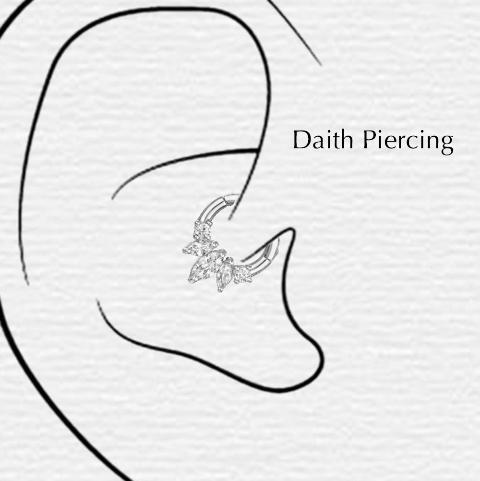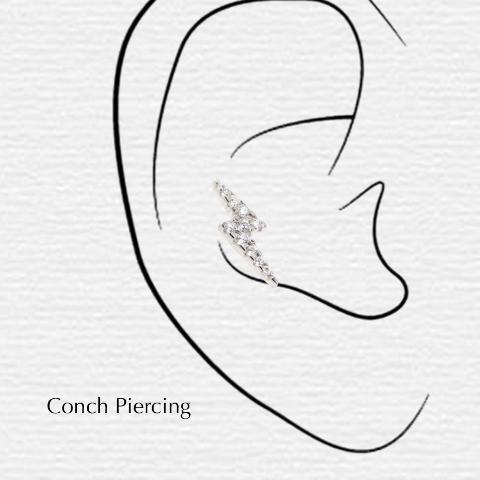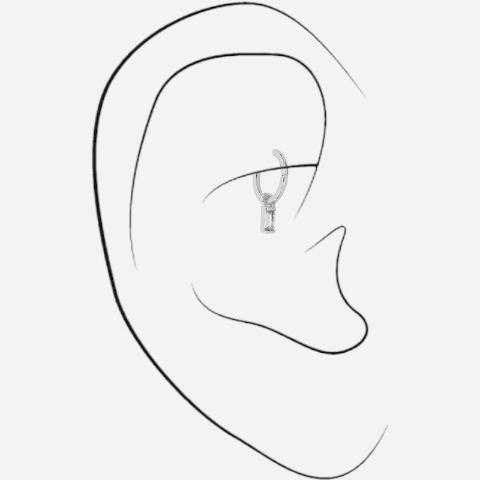Rook Piercing: Healing Time and Care Guide
The rook piercing has gained popularity as a stylish and unique addition to ear piercings. Nestled in the upper cartilage fold, the rook piercing creates an edgy look that is both elegant and eye-catching. If you're considering getting a rook piercing, it's essential to understand the healing process and how to take care of it properly. Here's a guide to help you navigate through the healing period and ensure a successful piercing experience.
Healing Time:
The healing time for a rook piercing can vary from person to person, but it typically takes around 6 to 9 months for the piercing to fully heal. The cartilage in the rook area is thicker than other parts of the ear, which means it may require more time to heal completely. It's crucial to be patient and not rush the healing process to avoid complications or delays in healing.
Initial Aftercare:
After getting your rook piercing, the piercer will provide you with detailed aftercare instructions. However, here are some general guidelines to keep in mind:
1. Cleanliness: Always wash your hands thoroughly before touching your piercing. Use a mild, fragrance-free antibacterial soap to clean the piercing twice a day. Gently lather the soap around the piercing, rinse it with warm water, and pat it dry with a clean paper towel.
2. Saline Solution: Saline solution can be used as an additional cleansing agent. You can either purchase a sterile saline solution from a reputable piercing or drugstore or make your own at home by mixing 1/4 teaspoon of non-iodized sea salt with 8 ounces of distilled water. Apply the saline solution to the piercing using a sterile cotton ball or a sterile saline spray.
3. Avoid Irritants: During the healing process, it's important to avoid irritants such as hair products, perfumes, and cosmetics around the piercing area. They can introduce bacteria or chemicals that may hinder the healing process.
4. Be Gentle: Avoid excessive touching, twisting, or playing with the jewelry. These actions can introduce bacteria, cause irritation, and delay the healing process.
5. Clothing and Bedding: Be mindful of the clothing and bedding materials that come into contact with your rook piercing. Opt for loose-fitting clothing and use clean, soft bedding to avoid snagging or irritation.
6. Avoid Swimming: It's recommended to avoid swimming in pools, hot tubs, and natural bodies of water until your rook piercing is fully healed. These environments can harbor bacteria that may cause infections.
Ongoing Care:
Once the initial healing period is over, it's still important to maintain good care for your rook piercing to prevent complications. Here are some tips for ongoing care:
1. Cleanse Regularly: Continue cleaning your piercing once a day with a mild antibacterial soap or saline solution. However, you can reduce the frequency to once a day instead of twice.
2. Jewelry Maintenance: Ensure that the jewelry is clean and free from any debris or buildup. Gently rotate the jewelry while cleaning to prevent it from sticking to the surrounding tissue.
3. Be Mindful of Sleeping Positions: Avoid sleeping on the side of your newly healed rook piercing, as pressure or friction can cause irritation. If necessary, use a travel pillow or a specialized piercing pillow to minimize contact with the piercing during sleep.
4. Jewelry Upgrades: If you wish to change the initial jewelry, it's best to consult a professional piercer. They can ensure a safe and proper jewelry swap, minimizing the risk of damage or infection.
5. Check for Signs of Infection: Keep an eye out for any signs of infection, such as excessive redness, swelling, pain, or discharge. If you notice any of
The rook piercing has gained popularity as a stylish and unique addition to ear piercings. Nestled in the upper cartilage fold, the rook piercing creates an edgy look that is both elegant and eye-catching. If you're considering getting a rook piercing, it's essential to understand the healing process and how to take care of it properly. Here's a guide to help you navigate through the healing period and ensure a successful piercing experience.
Healing Time:
The healing time for a rook piercing can vary from person to person, but it typically takes around 6 to 9 months for the piercing to fully heal. The cartilage in the rook area is thicker than other parts of the ear, which means it may require more time to heal completely. It's crucial to be patient and not rush the healing process to avoid complications or delays in healing.
Initial Aftercare:
After getting your rook piercing, the piercer will provide you with detailed aftercare instructions. However, here are some general guidelines to keep in mind:
1. Cleanliness: Always wash your hands thoroughly before touching your piercing. Use a mild, fragrance-free antibacterial soap to clean the piercing twice a day. Gently lather the soap around the piercing, rinse it with warm water, and pat it dry with a clean paper towel.
2. Saline Solution: Saline solution can be used as an additional cleansing agent. You can either purchase a sterile saline solution from a reputable piercing or drugstore or make your own at home by mixing 1/4 teaspoon of non-iodized sea salt with 8 ounces of distilled water. Apply the saline solution to the piercing using a sterile cotton ball or a sterile saline spray.
3. Avoid Irritants: During the healing process, it's important to avoid irritants such as hair products, perfumes, and cosmetics around the piercing area. They can introduce bacteria or chemicals that may hinder the healing process.
4. Be Gentle: Avoid excessive touching, twisting, or playing with the jewelry. These actions can introduce bacteria, cause irritation, and delay the healing process.
5. Clothing and Bedding: Be mindful of the clothing and bedding materials that come into contact with your rook piercing. Opt for loose-fitting clothing and use clean, soft bedding to avoid snagging or irritation.
6. Avoid Swimming: It's recommended to avoid swimming in pools, hot tubs, and natural bodies of water until your rook piercing is fully healed. These environments can harbor bacteria that may cause infections.
Ongoing Care:
Once the initial healing period is over, it's still important to maintain good care for your rook piercing to prevent complications. Here are some tips for ongoing care:
1. Cleanse Regularly: Continue cleaning your piercing once a day with a mild antibacterial soap or saline solution. However, you can reduce the frequency to once a day instead of twice.
2. Jewelry Maintenance: Ensure that the jewelry is clean and free from any debris or buildup. Gently rotate the jewelry while cleaning to prevent it from sticking to the surrounding tissue.
3. Be Mindful of Sleeping Positions: Avoid sleeping on the side of your newly healed rook piercing, as pressure or friction can cause irritation. If necessary, use a travel pillow or a specialized piercing pillow to minimize contact with the piercing during sleep.
4. Jewelry Upgrades: If you wish to change the initial jewelry, it's best to consult a professional piercer. They can ensure a safe and proper jewelry swap, minimizing the risk of damage or infection.
5. Check for Signs of Infection: Keep an eye out for any signs of infection, such as excessive redness, swelling, pain, or discharge. If you notice any of

